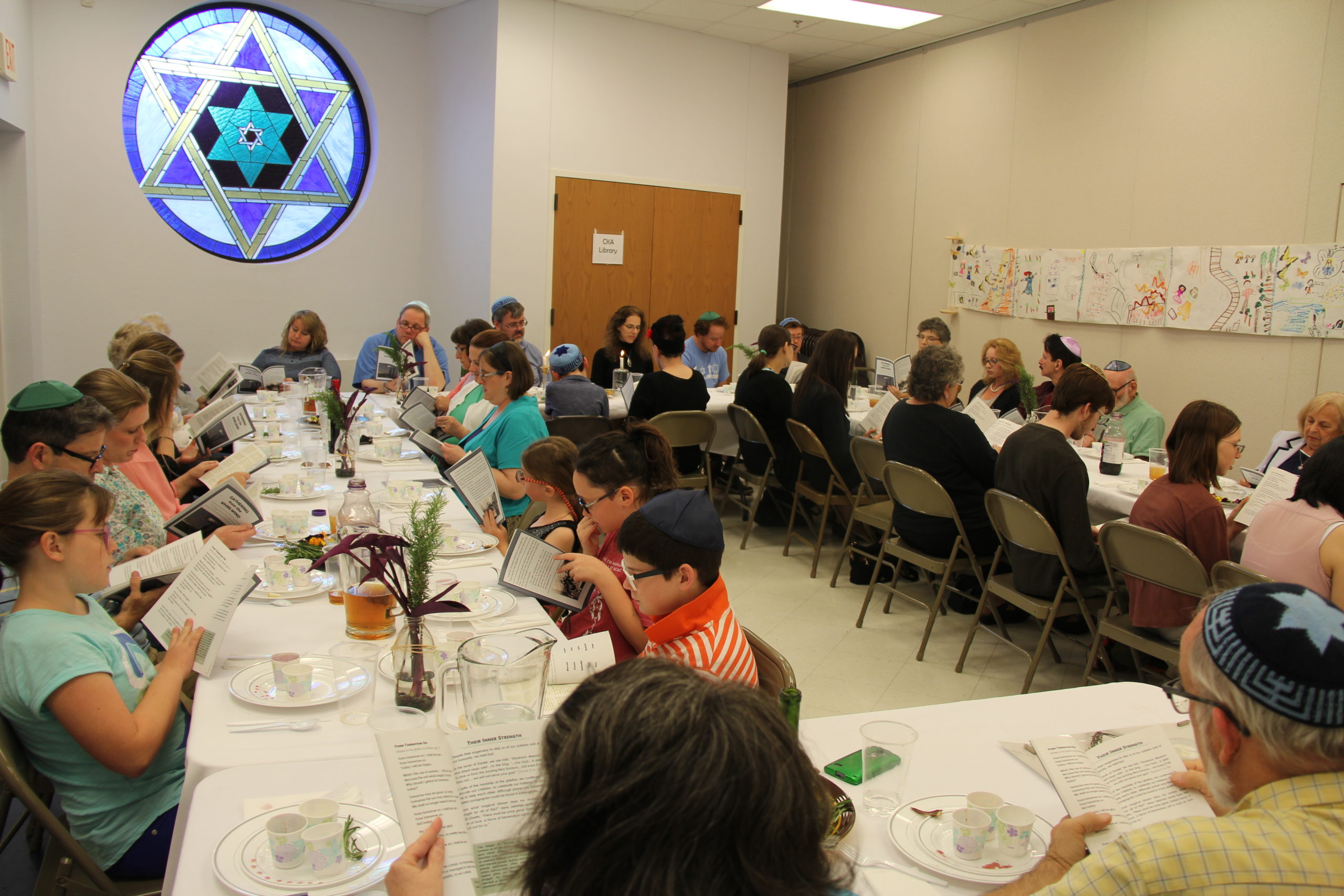Yom HaShoah is typically a somber time to reflect, and for me personally, to be angry at the world. It is not generally a holiday to which I look forward. A small part of me wants the day to hurry up and be over, but I know that this day should be observed, so I do.
This year was different, however. My congregation, Congregation Kol Ami in Flower Mound, TX, hosted a very unique ceremony, designed to commemorate not only the terrible things that happened but also the strength with which we met them, to celebrate our survival while mourning our dead. My experience at this Seder-like ceremony has opened a whole new view to the holiday.
The ceremony opened with a song, candle-lighting, and the memory of the sweet life we had before the war. We then walked our way into the darkness, talking about the trouble in Germany, the ghettos, and the camps. At each stop, we paused to acknowledge what happened. In the ghettos, we ate potato skins dipped in salt water to remember their starvation and tears and drank sweet tea in place of the wine that they could not get. We ended this section by spilling drops of wine as we chanted the names of ten thriving, vibrant Jewish communities that were destroyed.
What is special about this ceremony, however, is that it did not end there, with the destruction and the tears. Having come to the darkest place, we walked our way back to the light. We remembered the inner strength with which our ancestors met these challenges and ate olives and dates with pits to remember their unbreakable inner core. We remembered the righteous gentiles who helped us and recognized that, eventually, liberation did come.
Having come through the darkness and back to the light, we took some time to remember. We remembered those who were lost, covering a photo of a barbed-wire Mogen David with pictures of individuals from before the war, to remember them as they lived, not as they died. To do this, we got up and walked around the table to the center, where the barbed-wire star had sat throughout the evening. Each picture had the person’s name on the back and we each read the name on our picture as we placed their pictures down, until all the barbed-wire had been covered. As we returned to our seats, we lit yahrzeit candles and said Kaddish for the dead.
Having mourned the dead, we acknowledged the strength it took to return to life, to count the living, and go on. “We are the living because they chose life. As we were all at Sinai, so we are all the children of survivors.”[1] We said a shehekiyanuto celebrate our survival. We closed with a meal of roast chicken, German spaetzli, and fancy French cookies, chosen to honor the culture of our ancestors and celebrate their survival. We ended with a song: Lo Yisa Goy – Nation Shall Not Lift Up Sword Against Nation – to remind ourselves that we must always work for peace.
What a wonderful, heartwarming way to honor and respectfully remember the lives lost during the Holocaust. I spent an evening surrounded by a variety of people ranging from friends to strangers, all coming together around a table to experience the Yom HaShoah holiday.
I came away from the table with a peaceful sense of closure. Thoughtful moments and discussions were interrupted by our moving through the steps of the ceremony with poignant symbols on the “Seder” plates thoughtfully placed throughout the tables. The sharing of the potato skins was especially moving to me.
These stories must continue to be told and the memories must be carried on through time, but with this refreshing approach it is not such a burden. The time was spent reflecting with honor to our past and hopeful determination in our future for a humanity that we, as a community, a culture, and a nation, are so badly in need of today.
[1] Gathering from the Whirlwind: A Commemoration Ceremony for Yom HaShoah, page 36.
Written with Virginia Ring, a member of Congregation Kol Ami and resident of Flower Mound, TX.
This post was originally posted at the Women of Reform Judaism.
This post was also cross-posted to ReformJudaism.org.

0 Comments